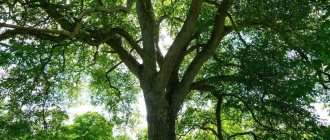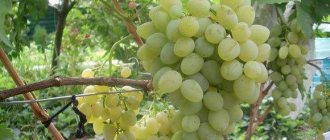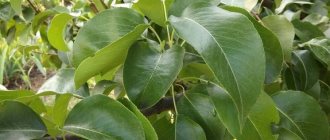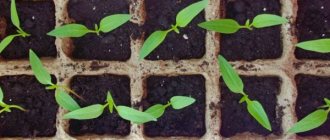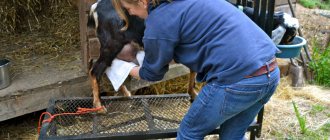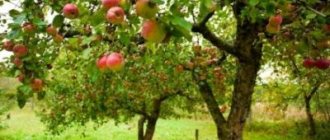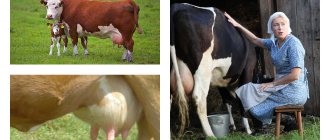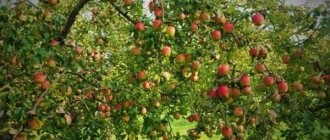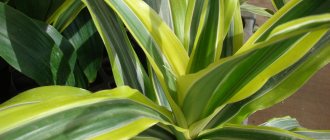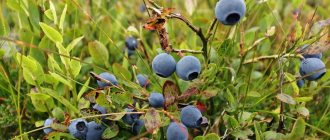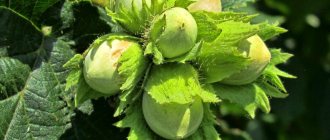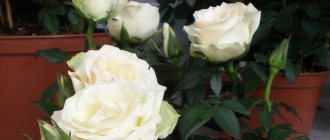In what year does the apple tree begin to bear fruit after planting? The exact time depends on the particular variety, but in general, the fruit tree begins to bear fruit no earlier than five years later.
Cultivation of an apple tree is a rather long process, therefore, it will not be possible to get fruits in the first year of growth. But if you carefully read our article, you will find out what the fruiting period depends on, whether it is possible to bring it closer, and also find out which varieties of apple trees begin to bear fruit earlier than others.
How to choose the right apple seedling for planting
To choose the right seedling, you need to pay attention to the stock and choose a tree depending on the characteristics of the planting site. Depending on the stock, the planting material is divided into three types:
- Tall plants up to 8-10 m, with a deep rhizome. Such a tree can be planted in an area where groundwater is at least 3 m.
- A medium-sized culture that grows up to 5 m. This species is suitable for growing in an area with groundwater occurrence no closer than 2.5 m.
- Low-growing apple trees have a height of 2.5-3 m, they are grown in an area with a groundwater table of at least 1.5 m.
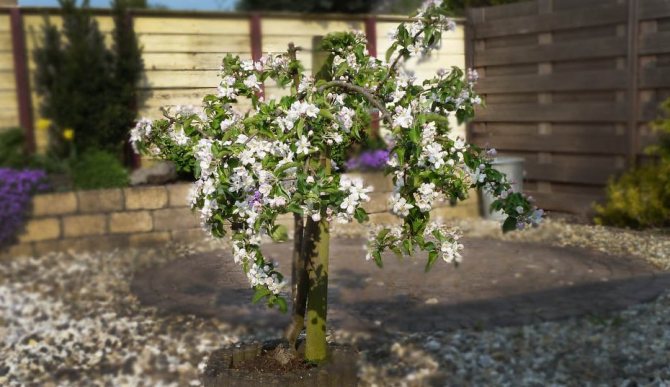
The contact of the roots of a tree with groundwater can weaken the apple tree, worsen fruiting, and diseases will appear
Where to buy seedlings
It is better to buy apple tree seedlings in specialized nurseries and garden organizations. It is not recommended to purchase planting material from sellers without a license, otherwise there is a risk of buying a fake that will not bear fruit.
What varieties of apple trees to choose
To get an excellent apple harvest in the summer, you need to choose the right variety for planting. You should choose varieties that are represented in local nurseries or grow in neighboring gardens, then there will be a high rate of survival and fruiting. When choosing a seedling, they also pay attention to the climatic features of the region and the ripening time of the variety that you want to plant.
Growing region
The cultivation region is one of the factors that determines how long a fruit crop will be viable:
- in warm climatic conditions, the life expectancy of an apple tree is much higher - about 100 years;
- in central Russia, this figure is significantly reduced, the tree lives for 50-60 years;
- gardeners of northern regions, where frosts often occur, change plants in the garden every 35-40 years, and some varieties are unable to survive even one winter.
How to save an apple tree seedling before spring planting
If the planting of a seedling was planned in the fall, but the planting failed due to early frosts, do not despair. The plant can be stored until spring, for which there are several ways: digging in the planting material, snowing or storing in the basement.
Prikop of seedlings
A bunch of seedlings is used at a time when it is too late to plant a plant, but the ground is not frozen yet. The area for the digging hole should be dry and well ventilated. To store the planting material, you need to dig a hole, the approximate dimensions of which are 50 cm deep and 40 cm wide.
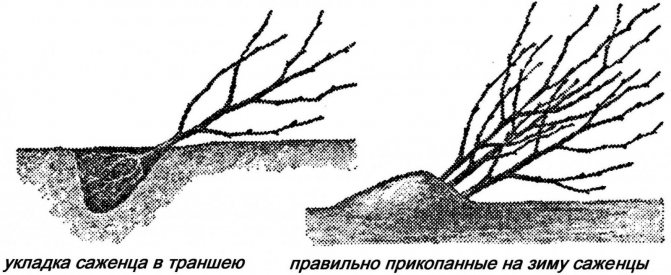

Do not forget about the living creatures that are dangerous for buried seedlings - mice and hares.Be sure to take all possible measures to protect against them. In the spring, with the onset of warmth, the seedlings are carefully excavated and planted in a permanent place. A layer of peat with sand must be poured onto the bottom of the pit, which will save the plants from rotting during the melting of the snow. The seedlings are placed in the pit; spruce branches are laid on top of them and covered with dry earth to the very top. The pit is covered with roofing material.
Important! When placing seedlings in a pit, it is necessary to ensure their correct location: the rhizome should point to the north, and the upper shoots to the south. This arrangement of plants inside the pit will protect them from strong wind gusts and drying out.
Snowing seedlings
Snowdrifts are an excellent shelter for planting material. Snowing is carried out provided that the layer of snowfall reaches 15 cm. Snowing process:
- Dig a hole in the soil that will be 40 cm deep and 30 cm wide.
- Place the rhizome in polyethylene and insert the entire seedling into the pit.
- Cover with soil.
- Cover with dense material (roofing material can be used).
- Cover the shelter with snow.
- Pour sawdust on top of the snow, in a layer of 5 cm.
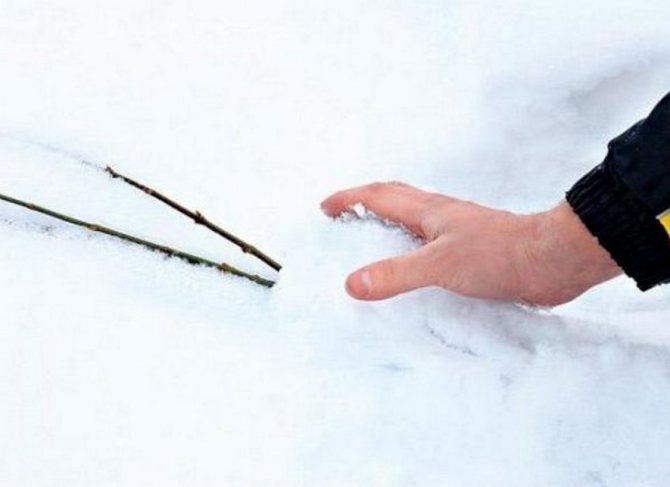

Under a snow cushion, seedlings winter well
Features of storing seedlings in the basement
Storage of seedlings in the basement should be carried out while maintaining the optimum air temperature from 0 ° C to + 2 ° C and humidity up to 80%. For storage, it is necessary to prepare wooden boxes, the bottom of which is covered with sand. The root system is loosely wrapped with polyethylene, in which holes are made for ventilation. A seedling is placed on top of the sand layer and covered with sand so as to completely cover the entire plant.
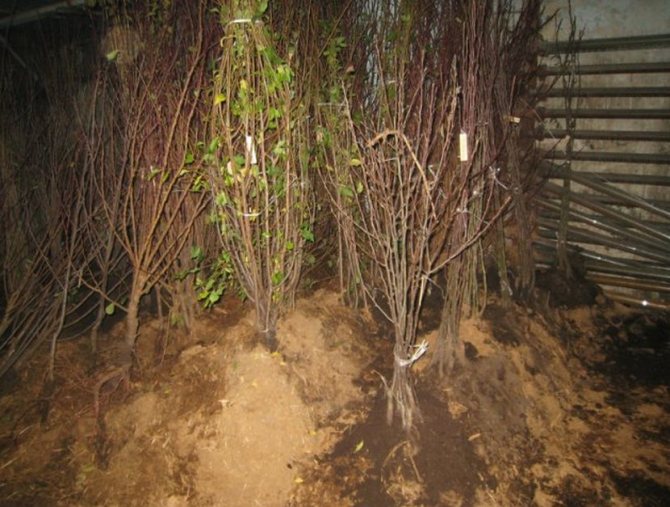

When storing seedlings in the basement, it is necessary to regularly check the moisture content of the roots.
How many years does a tree live in the third period?
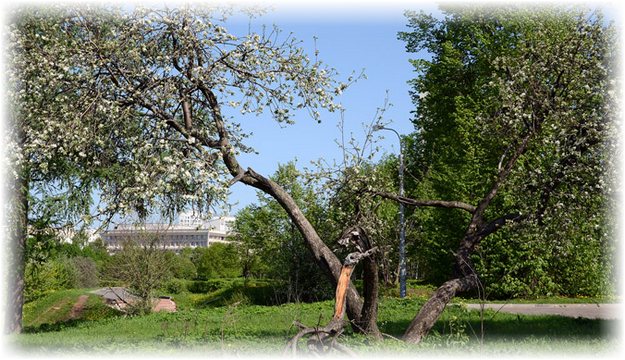

During the third period, the development of the apple tree is concluded. The growth processes are coming to an end. In the same period, skeletal and shoot-forming branches gradually die off. Apple trees stop yielding or fruits appear on them in small quantities.
Advice. It is worth thinking about preparing for the future replacement of affected fruit trees. This process can be carried out throughout the year.
How to properly plant an apple tree seedling on the site
To grow a healthy apple tree, you need to choose the right place for its cultivation and follow the planting technology.
Important! Seedlings must be planted according to the scheme: 3 m distance between plants and 2.5 m between rows, then crowns growing every year will not interfere with each other.
To plant a seedling, you must:
- Dig a hole with dimensions: 60 cm deep and 70 wide.
- Mix the top fertile soil layer taken from the pit with 10 kg of humus, 100 g of superphosphate and 30 g of potassium.
- Pour the mixture of soil with fertilizer into the pit to the middle, forming a mound in the form of a slide.
- Carefully insert the seedling into the hole, spreading the roots along the embankment.
- Top up the hole with soil.
- Tamp the soil tightly and form a near-trunk circle in the form of an embankment of earth, at a distance of 50 cm from the trunk.
- Water the plant with 20 liters of water.
Video: instructions for planting an apple tree
Optimal planting time
Planting of apple trees in the spring is carried out from April 10 to May 15, during the period when the air temperature becomes stably high up to + 15 ° С.
Seat selection
The planting site should be well lit, which will have a beneficial effect on the taste of the fruit. There should be no drafts that cause the movement of pests and fungal spores; also a strong wind can provoke breakage of shoots.
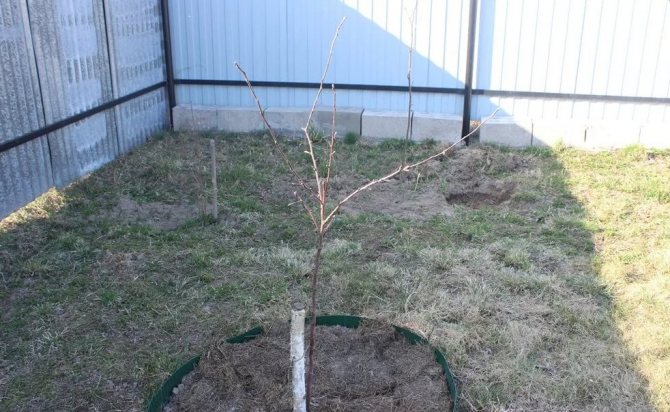

A place for the apple tree should be chosen quiet, protected by a fence or building. Groundwater should lie at a depth of 1.5 m. You can choose a site on a hill to avoid flooding of the rhizome during heavy rainfall.The soil should have a neutral pH - too acidic environment will lead to cracking of the bark.
Did you know? The most common type of apple tree has the name
cultivated apple tree, orhome (Malus domestica), and has more than 10 thousand varieties.
Site preparation
The site for planting begins to be prepared in the fall. The surface of the soil should be carefully removed, without leaving leaves, fallen fruits and weeds on it. Then the terrain is dug up with humus on a shovel bayonet.
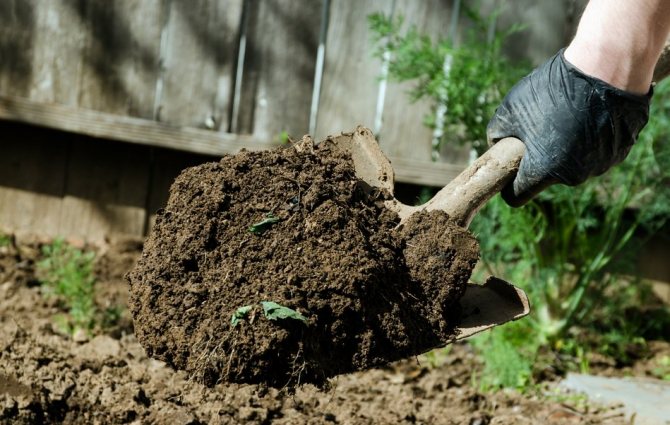

The soil must be checked for acidity, for which a litmus test is used. To carry it out, soil is taken from several places on the site, each sample is placed in a tissue bag and immersed in a glass with distilled water for 5 minutes. After this time, the litmus test is dipped into a glass of water for 10 seconds. The result must be checked against the scale attached to the test. If the soil is acidic, then it will be limed - 500 g of dolomite flour per 1 m² is required, a moderately acidic environment requires 400 g per 1 m².


Historical page
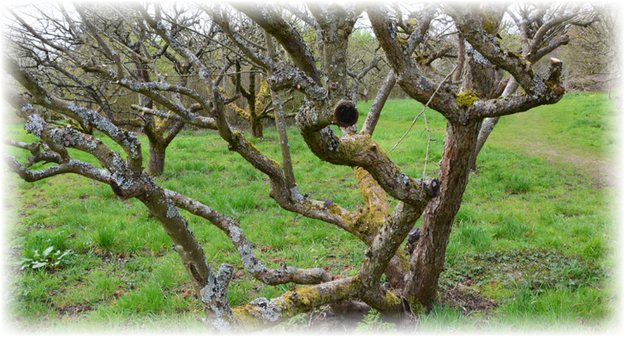

The most famous and for a long time cultivated tree of all living on planet Earth is the apple tree. We can also read in the Bible that Eve plucked a fruit from the tree of knowledge, which was the apple tree.
Many researchers say that the first apple trees appeared in several millennia. This is much earlier than the emergence of the human race. During excavations carried out in ancient buildings, the researchers found charred apples. In the course of the research, it was found that people used similar products for 5 millennia before the modern era. On ancient Egyptian monuments, you can see images of cultivated apple trees that live 3 thousand years to the present.
Historians come to the conclusion that wild apple varieties appeared in the Transcaucasian, Central Asian, Chinese, Asian, North American lands. Later, the Greeks were brought to Europe around the 2nd millennium BC, where they began to grow.
Apple trees have been living in Russia since the reign of Yaroslav the Wise (11th century). Planting apple trees in the territories near Moscow became possible in the 12th century, when Yuri Dolgoruky signed a decree on the distribution of fruit trees.
The fruit is considered to be one of those that provide benefits for human health. That is why all over the world people are engaged in the cultivation of delicious apples, so that they can then be eaten.
Further care of the apple tree seedling
Growing an apple tree is not a time consuming process. However, you need to take care of the culture regularly, then the tree will delight the gardener with its beauty and abundant fruiting.
Learn how to make an apple tree blossom and bear fruit.
Watering and loosening
It is necessary to regularly water the seedlings so that they grow faster. Watering is carried out once every 2-3 weeks, depending on weather conditions. During one irrigation procedure, 20 liters of water are added, which is preliminarily defended for 2 days. It is imperative to loosen the soil around the trunk circle. The procedure is carried out to a depth of 15–20 cm. Loosening allows you to saturate the soil with oxygen, which is necessary for the root system.
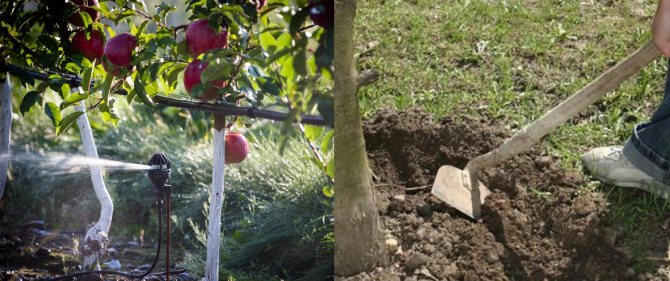

Top dressing
Feeding a young tree begins at 3 years of growth, because the nutrients that were laid down during planting will be enough for 2 years. Further feeding is applied according to the following scheme:
- Before budding, fertilizer is applied for digging. It is necessary to step back 25 cm from the trunk and loosen the soil with urea in the amount of 600 g per tree.
- After flowering, organic fertilizer can be applied in liquid form. It is necessary to dilute 2 kg of poultry manure in 10 liters of water. One tree requires up to 30 liters of solution.
- The next fertilizer is produced at the end of August, it is prepared from 500 g of nitrophoska, 10 g of sodium humate, 10 liters of water. One tree needs 30 liters of top dressing.
- Top dressing is also carried out at the end of October, before wintering. In 10 liters of water, 30 g of potassium and 60 g of superphosphate must be diluted. You will need 30 liters of fertilizer.
Video: feeding the apple tree
Crown formation
It is best to form a sparse-tiered crown in an apple tree, which in appearance resembles a natural one - with such pruning, an arrangement of up to 3 skeletal branches in one tier is permissible. It is necessary to start forming the top from the first year of growth. Pruning is done in early spring, before the sap starts to move, late March is a great time. The first step is to determine the area of the trunk, which is 50 cm from the soil. There should be no branches on this segment, they are cut out. Above the zone of the trunk, another 30 cm is measured - this will be the zone of the location of the first tier of skeletal shoots. All shoots located above must be removed, and the central shoot must be cut off by 20 cm.
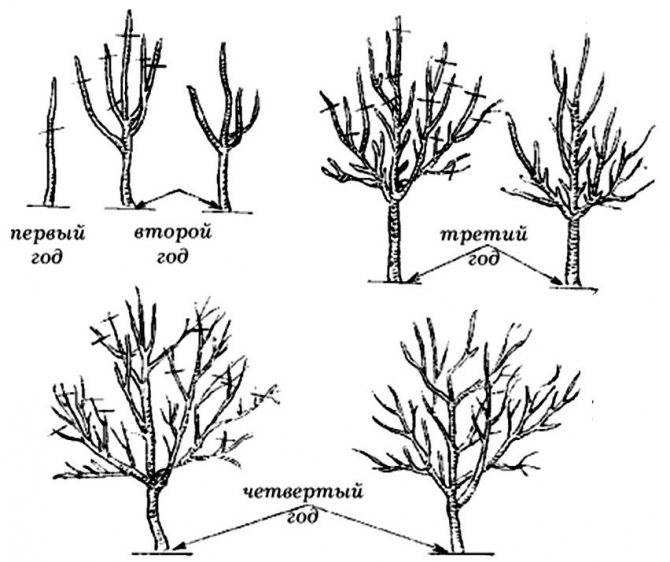

The sequence of the formation of a sparse-tiered crown (2-4 years after planting): on the left - before pruning; on the right - after pruning. Next year, it is necessary to remove all shoots in the area of the trunk, and also to start forming the lower tier of skeletal branches. 3 branches are left: the first should be located in the area of the trunk, 50 cm from the ground, and the other two should be located on the opposite side, so that there is a distance of 15–20 cm between each of the branches.
Pest and disease control methods
The apple tree has many insects - enemies, the apple tree also suffers from diseases. It is necessary to fight with them, because getting a good harvest depends on it.
Hawthorn
This white-winged moth is very prolific. Damages apple leaves. One female can produce up to 500 eggs. Its caterpillars harm the trees. In the spring, in order to combat the pest, plants are used: Karbofos, Fosfamid, Metaphos and other preparations - insecticides.
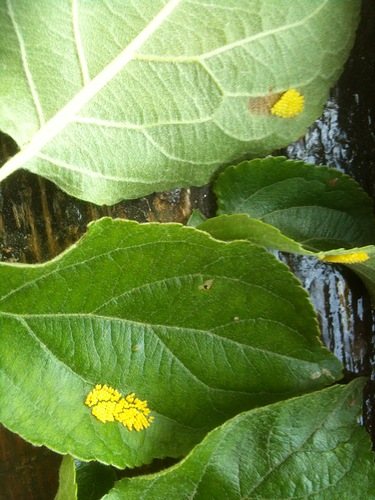

Hawthorn moth
The moth larvae also feed on foliage. The buds have not yet opened, the trees are sprayed with Nitrofen to combat adult insects. It is necessary to destroy the caterpillars before the trees bloom, by processing with Karbofos.
Winter moth
This butterfly attacks plants in late autumn, affects the entire plant, except for the underground part. The pest lays eggs in the fall, and in the spring, during flowering, the caterpillars begin their harmful activity. They are destroyed by repeated treatments with pesticides. The soil under the trees is dug deeply to destroy the pupated pest. In the fall, hunting belts will also help, which are attached to the trunks of apple trees.
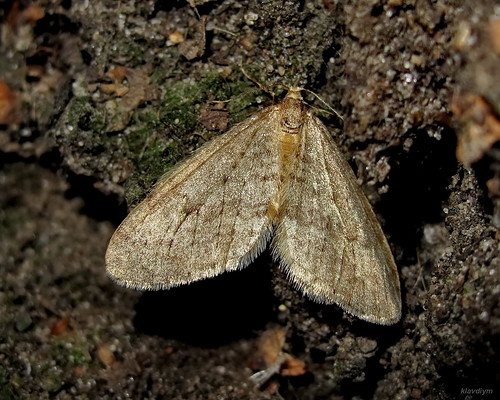

Apple mite
A very small insect that feeds on foliage sap. It hibernates in the bark, so it is necessary to remove the old bark in time and destroy it. Helps in the fight against insects an aqueous solution of Karbofos and other insecticides.
Apple aphid
The insect is ubiquitous. It feeds on leaves that are covered with an unpleasant bloom. They fight these pests by treating apple trees with soap and tobacco solution or pesticides.
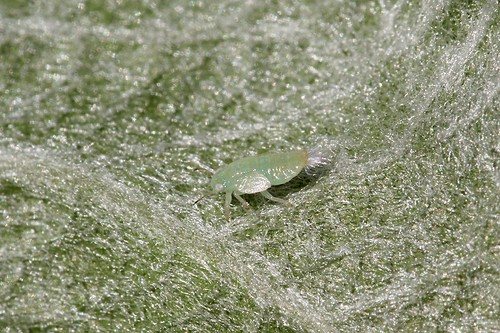

Powdery mildew
The disease affects all aerial parts of the plant. First of all, a bloom of white appears. Then it turns brown with small dots. All affected parts of the plant must be cut and burned. If the disease is in the early stages, then sulfur preparations of 80 grams per 10 liters of water can be used.
Apple fruit rot
Fruits are affected by fungal spores. First, brownish-brown spots appear on the fruits, then white circles appear on them. Diseased fruits fall to the ground or dry out on the branches. Sick fruits are collected and thrown away from the site. And apple trees are sprayed with 1% Bordeaux liquid.
Scab
Foliage and apples are affected. In the spring, the first symptoms are visible: the leaves become greenish-brown, they dry out quickly. Small brownish spots appear on the apples.
To defeat the disease, trees must be processed three times.The first time, when the buds open, a treatment with 3% Bordeaux liquid is done. The second time, when flowering ends — 1% Bordeaux liquid, HOM or Kuprozan. The third - two to three weeks after flowering, the plants are processed by Horus or Ditan.
The frequency of fruiting
The annual apple fruit offering is every gardener's dream. Some apple varieties form a limited number of fruitful ovaries. A stable harvest depends on correct crown formation, timely pruning and abundant watering.
Connoisseurs of folk cultivation methods have achieved annual yields. The unnecessary ovary is eliminated, thereby normalizing the number of inflorescences and ovaries. Each year, different parts of the apple tree must undergo the process.
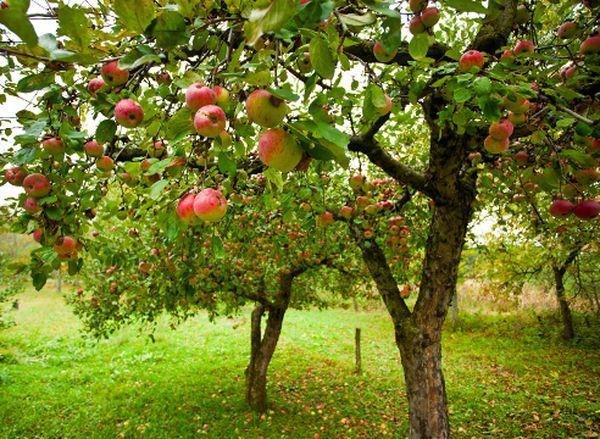

Due to the accumulation of nutrients for the coming harvest, this very "periodicity" is created.
Nature, at times, creates unfavorable factors for the development and ripening of fruits. These include the presence of:
- Frosts that destroy buds and flowers.
- Cold and rainy summers followed by winters with little snow. It is in the summer that the ripening process takes place.
- Species and varietal diseases.
- Mass invasion of parasites.
- Lack of nutrients.

